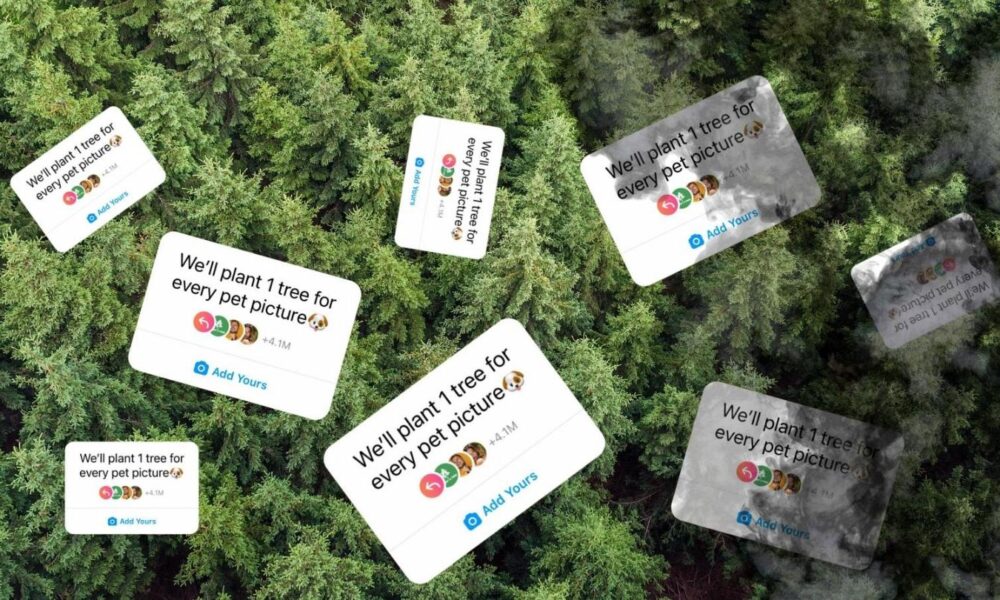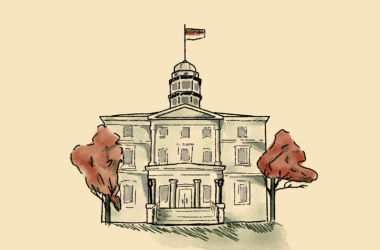Last month, many found their Instagram story feeds flooded with Plant a Tree Co.’s viral “Post a picture of your pet and we’ll plant a tree” sticker. The trend comes after the platform added the new “Add Yours” sticker feature, which allows users to attach their own pictures to a public prompt on their stories. Days later, Plant a Tree Co.’s prompt had over four million uploads and showed no signs of slowing. Following the growing reach of the post, many Instagram users began to question the viability of the account’s tree-planting promises. Plant a Tree Co. clearly backpedaled because they deleted the original post just after 10 minutes of putting it online. But because of the new sticker feature, the post kept circulating, effectively granting it a life of its own. Plant a Tree Co. will not be planting four, five, or six million trees. They have, however, redirected their goals and started a fundraiser instead.
While it was a mistake on the part of Plant a Tree Co. to make a promise that they knew could spin so far out of their control, the post’s quick virality indicates the complicated relationship between activism and social media. While it has the potential to be a tool for change, social media amplifies the performative aspect of activism––of which “Post a picture of your pet and we’ll plant a tree” is the perfect example. When activism is performative, it is usually a means to virtue-signal or show support for a cause without meaningful engagement. Treating activism as a fad without focussed intent and motivation will always be ineffective.
This trend, also known as “slacktivism,” does highlight how activists can benefit from social media: A single post can reach millions of people in a matter of minutes. This rapid spread of information renders participation in social movements more visible and accessible to a wider audience. Despite worries about the rise of slacktivism, collective action facilitated through online platforms has undeniably led to real change. Online campaigns like #MeToo gained the traction they did almost entirely because of social media. When much of our lives transitioned online during the pandemic, Black Lives Matter (BLM) activism shifted to social media as well, albeit with varying degrees of success. Performativity is even more striking when comparing the traction BLM gained in 2020 versus in 2014—when people were less present online. Without the internet, notifying people of protest locations, mutual aid needs, and community dangers was completely different. For one, mobilizing people through traditional channels, like physical posters or word of mouth, is far less effective because the internet has profoundly changed how we form communities and movements. Whereas potential protestors might have learned of a demonstration at a Sunday service, they are now more likely to find it on their feed online.
However, despite the potential for mass mobilization and visibility that online platforms enable, it is crucial to question whether they can sustain movements, and to what extent this visibility risks distorting a movement’s message. It would be naive to disregard the fact that most of the power of social media comes from posts being looked at and reacted to by others. When you mix the performative aspect of social media with white privilege, the revenue opportunities of platforms like Instagram, and easily digestible infographics, you are bound to produce a diluted movement. The type of mobilization encouraged by posts like “Post a picture of your pet” is low effort, and consequently, low benefit. It takes nothing to post a picture of your dog. It also gets you nothing, or nothing more than nicely curated feed.
Undergraduate students, made up mostly of avid social media users, need to find the balance between convenience and complacency. The reason why a lot of social media activism is ineffective is not because movements are poorly organized or because Instagram distorts messages; it is ineffective because it is performative. Online activism can host the nuanced and complex conversations that social issues require, but in order for that to happen users need to be more intentional in how they participate in social movements. There is revolutionary potential in the internet, and it doesn’t need to mimic life offline to thrive. It just needs to be authentic.







